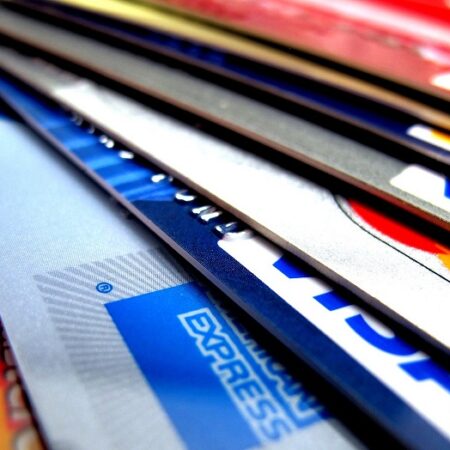
Few things in life can elicit the level of panic as that caused by losing your wallet. The moment you notice its absence, your mind immediately starts trying to simultaneously remember every step you’ve taken — and every credit card you own. And once you realize the wallet is gone for good, you still have to start the long process of calling every issuer to cancel your cards, and then survive the interminable wait until the new cards arrive.
Of course, in today’s digital era, potential credit card thieves don’t even need your physical card to make purchases with your credit. For fraudsters with the ability to do a little digital digging — or willing to pay someone who has the skills — the internet can be a veritable all-you-can-eat buffet of stolen credit card data.
With so many ways for your sensitive data to get into the wrong hands, the obvious question is, who is liable for fraudulent purchases made with a lost or stolen credit card? The short version: the merchant, mostly. The longer version: it depends on the nature of the transactions and if you reported your card as lost or stolen.
The Fair Credit Billing Act (FCBA) Limits Your Liability
As laid out by the Fair Credit Billing Act (FCBA), consumer liability for fraudulent charges made with a physical credit card is limited to $50. If you notice the loss or theft right away, however, and report the card to your issuer before any fraudulent transactions occur, then you will have $0 liability for any purchases not authorized by you.
What’s more, most credit card issuers go a step further, operating under $0 liability policies that completely protect you from liability for fraudulent charges. For example, Discover advertises its “$0 Fraud Liability Guarantee” that protects all cardholders from having to pay for any fraudulent credit card transactions, regardless of whether a physical card was used.
But what about digital credit card theft? You’re covered here, too. For fraudulent transactions made with a stolen credit card number but not the physical card, you won’t be held liable for any of the unauthorized purchases. Furthermore, fraudulent transaction liability limits apply to all credit cards, including both unsecured and secured credit cards. Even subprime and instant-approval credit cards fall under the same protections provided by the FCBA.
And the majority of credit card issuers aren’t bothered in the least, not since the advent of the EMV chip-card, anyway. That’s because issuers hold the merchants responsible for the fraudulent purchases in most cases, as it’s the merchant’s responsibility to verify the purchaser is really an authorized cardholder at the time of purchase.
ATM & Debit Cards Also Have Liability Limits in Some Cases
Fraudulent purchase protections aren’t limited to credit cards, either. Here, the Electronic Fund Transfer Act (EFT) offers consumer protections in the event of a lost or stolen ATM or debit card. In contrast to credit cards, however, the amount you are liable for transactions made with lost or stolen ATM or debit cards will depend much more significantly on when you report the card as missing.
Specifically, if you report your ATM or debit card as lost or stolen before any unauthorized charges are made, you will not be liable for any fraudulent transactions made to your account. If you report the card within two business days after discovering the loss or theft and unauthorized transactions have already been made, you can be held liable for up to $50 in purchases.
Should you wait longer than two business days to report the card lost or stolen but make your report less than 60 calendar days after your statement is issued, your liability is then limited to $500. If you fail to report your ATM or debit card as missing within 60 days of your statement issue date, then you are out of luck; you’re simply out any and all money the thieves were able to procure from your account — and any linked accounts they could access.
For digital thefts, i.e., fraudulent purchases made with stolen ATM or debit card information but the physical card itself, you’ll enjoy the same $0 liability as with credit cards. The caveat here is that you must report the fraudulent transactions within 60 days of your account statement being sent to you to qualify for the $0 liability.
Diligence Can Help Protect Against Fraud Liability
Once upon a time, someone would need to physically steal your credit card to do much damage. Today, not only can a lost or stolen credit card wreak havoc on your life, but the digital theft your account information can be just as hazardous. Thankfully, most of the risk has been eliminated for consumers, but merchants may raise prices or reject certain methods of payment if fraud costs get too high.
For the most part, the best way to protect yourself against credit card fraud is simply to be diligent. In addition to being careful to avoid turning over your account information to a questionable merchant or website, you should regularly check your statements — a feat made much easier with online banking — to ensure you recognize each and every transaction.
If you lose your card or suspect your account information has been stolen, report it right away to the issuer. Many cards will also offer the ability to freeze a credit card account if you think you’ve lost your card or suspect it has been stolen, which can often limit the potential damage from fraudulent use.
Carry on the conversation on our social media platforms. Like and follow us on Facebook and leave us a tweet on Twitter.
Questions about credit repair?
Chat with an expert: 1-800-255-0263






